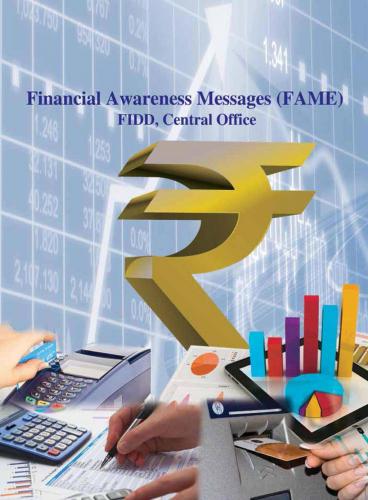
India has the highest GDP growth in the world today. But are we doing as well as we want to? When the Governor of the Reserve Bank posed this question, he was immediately criticised by government leaders for creating doubts in the minds of people in the country and abroad about India’s progress.
India’s GDP growth may be the highest in the world today. At the same time, India is perhaps the most water stressed large country in the world with millions struggling to find enough water even for their personal needs. Its cities are the most polluted. India is also the most job stressed country in the world. The UNDP’s recently released Human Development Report states that while India’s working age population increased by 300 million between 1991 and 2013, the economy could employ only 140 million. Young people cannot find jobs, which is fuelling unrest in many parts of the country. By 2050, another 280 million people will enter the job market.
Many comparisons are made by international agencies of how well countries are managing inclusion in growth by creating enough jobs, and the effects of economic growth on the environment. One of them is the Sustainable Economic Development (SEDA) framework developed by the Boston Consulting Group.
The UNDP’s recently released Human Development Report states that while India’s working age population increased by 300 million between 1991 and 2013, the economy could employ only 140 million.
SEDA is an instrument for assessing the effectiveness of countries in converting GDP growth to ‘well-being’ of their citizens. It considers performance along ten dimensions as the indicators of overall well-being. These are: GDP per capita, economic stability, infrastructure, employment, education, health, income inequality, governance, civil society, and impact on the environment. SEDA co-relates growth in GDP per capita with the other variables to determine a co-efficient of transformation of GDP wealth into overall well-being in the country. It provides an evaluation of the ‘policy-matrix’ of the country’s growth strategy i.e. how is improvement on all dimensions being managed along with growth.
How well India is converting increases in GDP to well-being can be assessed by comparing India’s performance with its twelve peers. These are the three other BRICs countries, five countries in S.E. Asia including Indonesia and the Philippines, and our four neighbors—Pakistan, Bangladesh, Sri Lanka, and Nepal. What this reveals is that India seems to be doing worse than its peers in creating well-being with growth, and even worse than its sub-continental neighbors.
India’s GDP growth has been higher in the last 10 years than all countries except China. It also ranks relatively high with respect to governance and economic stability. The two dimensions along which it is worst amongst its peers in converting GDP growth into well-being are generation of employment and protection of the environment.
What can we learn from other countries about how to improve our performance? The Bertelsmann Foundation of Germany has made a study of ‘Winning Strategies for a Sustainable Future’. Bertelsmann studied 35 countries around the world that appear to be leaders in developing strategies for sustainable growth. Bertelsmann examined the quality of their strategies, the frameworks for implementation, and results so far. Bertelsmann selected five key success factors. Two of these must be highlighted because they are the starting points of the process of faster improvement.
India’s GDP growth has been higher in the last 10 years than all countries except China. It also ranks relatively high with respect to governance and economic stability. The two dimensions along which it is worst amongst its peers in converting GDP growth into well-being are generation of employment and protection of the environment.
The first is that sustainability policy derives from an overriding concept and guiding principles that are made to permeate significant areas of politics and society. And ‘best practice’ to make this happen is to get specific in national debates on a new score-card of progress. Inclusion and sustainability must be achieved along with growth. Therefore, balanced score-cards are being developed and used by leading nations.
The second requirement for success, Bertelsmann’s study found, is that sustainability policy must be developed and implemented in a participatory manner. Therefore, the task for countries is to develop new participatory formats. Not only must large numbers of people be engaged, but different constituents must listen to each other to develop an integrative vision of the future of the country.
We cannot carry on the way we are. If we want to do better as a nation, we will have to face up to the truth and change the structure of the discourse in the country. Our public discourse is crippled by several disabilities. The first is the fear of admitting the truth in public because then we will look poorly to others. The second is the blame-game. In our competitive politics, debates promptly descend into fault-finding and finger-pointing. The third is the absence of platforms for sane deliberations. Debates on TV are designed to create sparks and entertainment, not to produce insights and agreements. The social media is even more shallow.
‘Nations without vision shall perish’, says the Old Testament. The force to change arises from a tension created by acceptance of the truth of where one is, and its distance from the aspirational vision to which one is committed. There is too little impetus towards change when the truth about current reality is obfuscated by the fear of looking small, or when the goal is set too low. To get out of the rut one must reach for the stars.
Having the fastest growth of GDP is not enough. India’s leaders must facilitate a new discourse to produce a balanced score-card to guide us and an integrative vision to unite us.
Arun Maira is a former member of the Planning Commission of India and author of ‘Discordant Democrats: Five Steps to Consensus’



